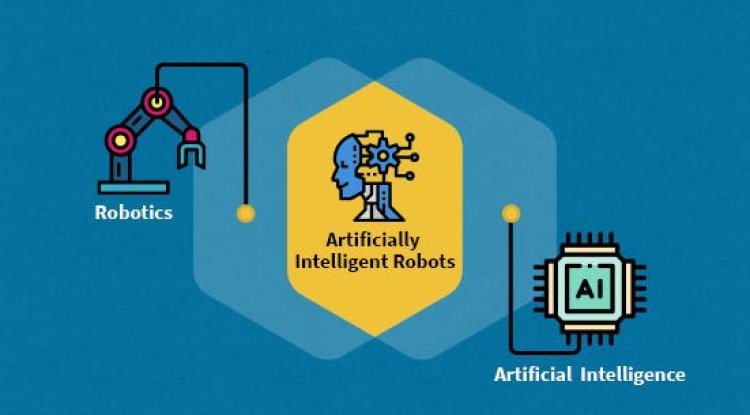Discover why Australia’s demand for 250,000 skilled workers by 2030 is a golden chance for international students to study, work, and migrate permanently.

Australia requires approximately 250,000 skilled workers by 2030 to meet growing labor demands across key sectors, including healthcare, technology, education, construction, and regional development. For aspiring international students, Australia's skilled worker shortage is increasingly seen as a direct pathway into these high-demand roles; hence, if you're planning to study abroad, this skills shortage could be one of your greatest opportunities yet. By choosing Australia, you'll gain a world-class education and open doors to long-term career prospects through skilled migration. In this blog, we'll explore why Australia needs more workers, how international students can benefit, and the top visa options available post-study.
Why Is Australia Looking for Skilled Workers?
Emerging technologies, a growing population, and digital transformation are redefining job roles and skill requirements across industries. Critical fields, such as technology, finance, engineering, and education, are facing notable skill shortages. In response, the Australian government is revising visa policies to attract international graduates who are well-equipped to step into these critical roles.
Study Now, Work Later: Education as Your Entry Point
With the recent changes to visa policies, it is easier to study, work part-time, and seamlessly transition into skilled migration pathways. International students who choose high-demand courses are better positioned for post-study work visas and can meet Australia's workforce needs head-on.
Here are the top priority sectors facing worker shortage:
- Healthcare and Aged Care
- Registered Nurses
- Aged Care Workers
- Physiotherapists
- Medical Technologists
- Engineering
- Civil Engineers
- Mechanical Engineers
- Electrical Engineers
- Mining Engineers
- Environmental Engineers
- Information Technology (IT)
- Cybersecurity Analysts
- Software Engineers
- Cloud Engineers
- Data Scientists
- IT Business Analysts
- Early Childhood and Secondary Education
- Early Childhood Educators
- Secondary Teachers
- Finance and Accounting
- Accountants
- Financial Analysts
- Tax Consultants
Check out all the course details and universities providing them right here!
What Makes This the Perfect Time?
Australia's immigration system is undergoing significant reforms, making it easier for international students and graduates to:
- Study in regional areas that offer longer post-study stays and migration points
- Take up courses in demand from the government’s skilled occupation lists
- Gain local work experience through internships and graduate roles
- Transition into Permanent Residency (PR) via clearer, faster visa routes
New programs, such as the Skills in Demand Visa (launching in 2024–25) and updates to the Temporary Graduate Visa (Subclass 485), make it easier to stay after graduation and explore sponsored or independent migration options.
Top Visa Pathways for Students Post-Study
-
Student Visa (Subclass 500)
For: International students enrolled in full-time courses
Benefits:
- Allows legal stay during study
- Part-time work (48 hrs/fortnight)
- Entry point to future skilled visas
-
Temporary Graduate Visa (Subclass 485)
For: Recent graduates from Australian universities or colleges
Benefits:
- Full-time work rights (2–6 years)
- Gain local job experience
- Builds eligibility for skilled migration
-
Skilled Work Regional Visa (Subclass 491)
For: graduates who are residing, studying, or employed in regional Australia
Benefits:
- 15 bonus points for PR
- 5-year visa with work rights
- PR pathway via Subclass 191
-
Skilled Nominated Visa (Subclass 190)
For: Skilled graduates nominated by an Australian state or territory
Benefits:
- Direct Permanent Residency
- No employer sponsorship is required
- Access to Medicare and social benefits
Benefits of Studying in Australia
- Globally Recognized Education: Degrees from Australian universities are ranked among the world’s best.
- Post-Study Work Rights: Master’s and PhD students can stay for up to 6 years in regional Australia after graduation.
- High Employability: Among 9 in 10 graduates find employment within 4–6 months of graduation.
- Regional Incentives: More migration points, longer stays, and increased PR chances for those who study outside major cities.
Your Checklist as a Future International Student in Australia
- Choose a course aligned with Australia’s skills shortage list.
- Consider studying in regional campuses for extra benefits.
- Understand the Genuine Student Requirement (GSR)
- Gain internships or part-time work during your course.
- Stay updated on visa changes and occupation lists.
Ever thought of applying for scholarships? Check out : [SCHOLARSHIPS FOR INDIAN STUDENTS TO STUDY IN AUSTRALIA]
Time to Step Forward
Australia's requirement of 250,000 skilled workers by 2030 is an open chance for talented, ambitious, opportunity-seeking students from around the world. With a forward-thinking visa system, globally respected education, and expanding job opportunities, international students have more than required reasons to see Australia not only as a study destination but also as a place to build a life and an evergreen career. Study smart, choose in-demand fields, gain experience—and Australia could be your next long-term home.
Still wondering if “study abroad Australia” is the right choice? No worries —you don't have to figure it all out alone. At ACHIVIA, we’re here to simplify your journey. Whether you’re unsure about which course to pick, which region offers better PR options, or how to navigate the visa maze—we’ve got your back. Book a free session with our expert counselors today and get honest, personalized advice on your study abroad future. Let’s turn questions into confidence—and your plans into progress.
What's Your Reaction?




















